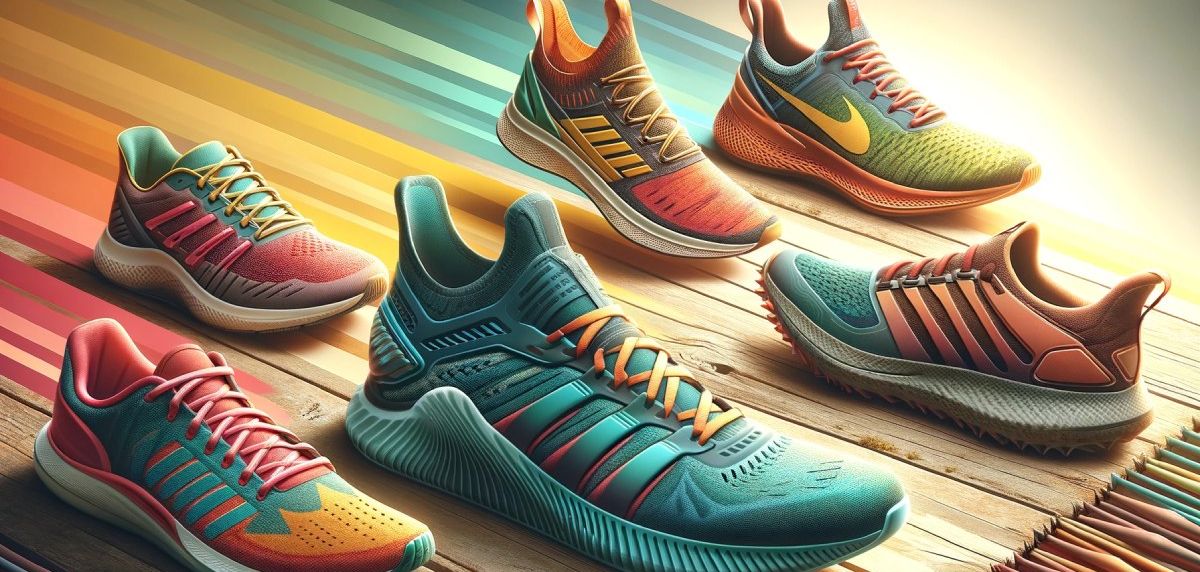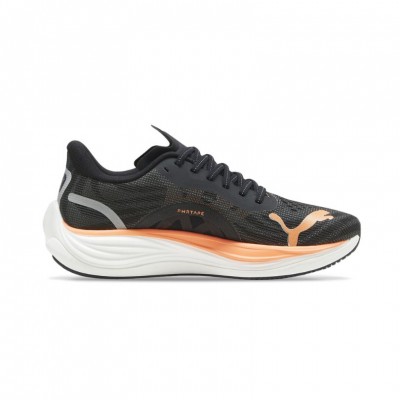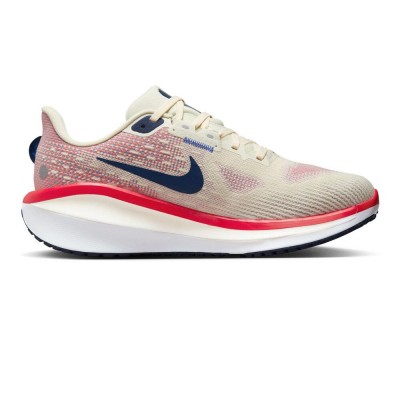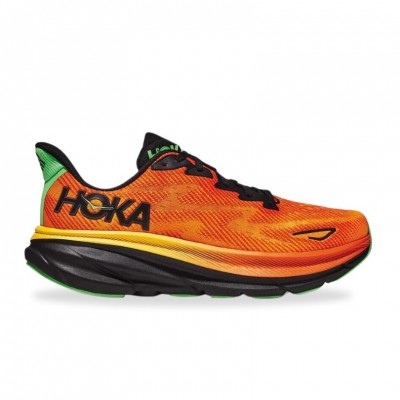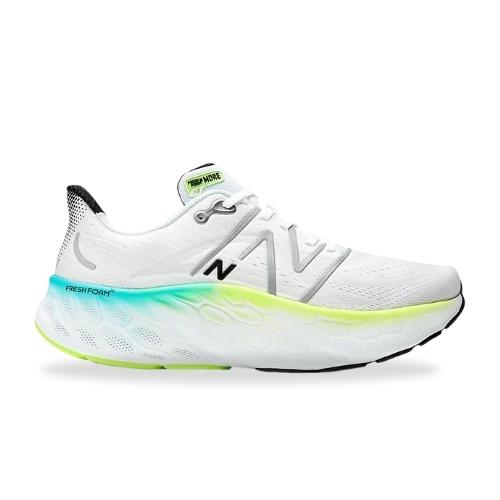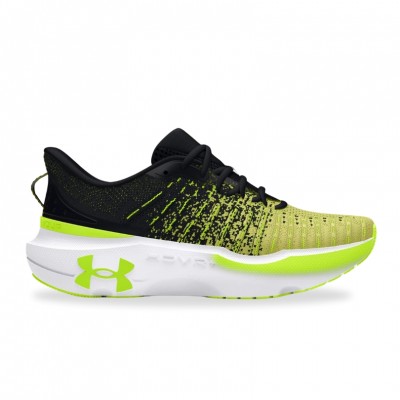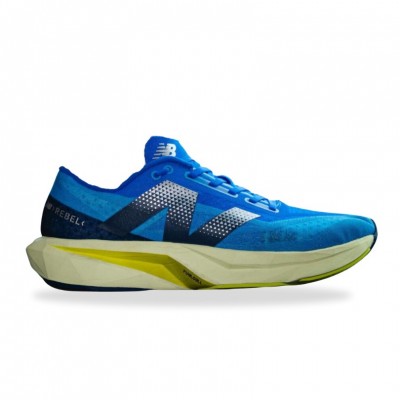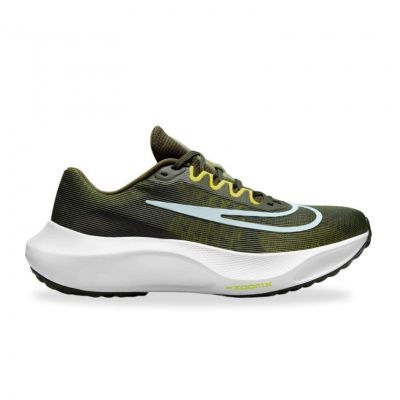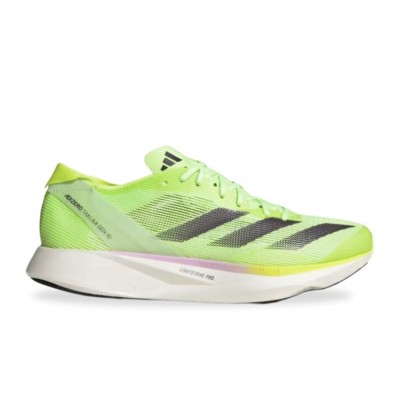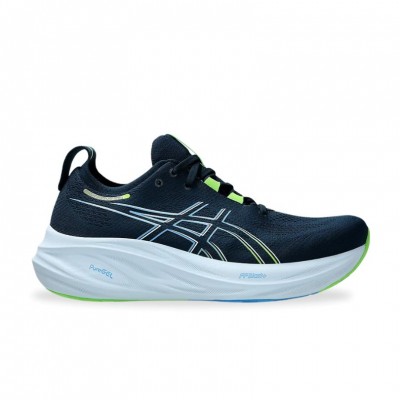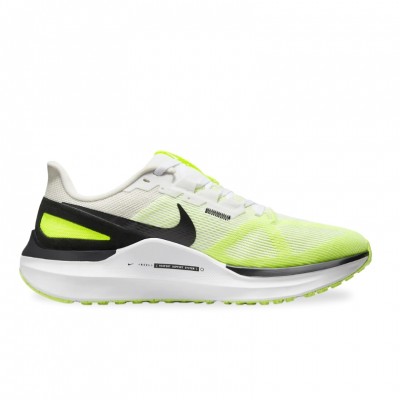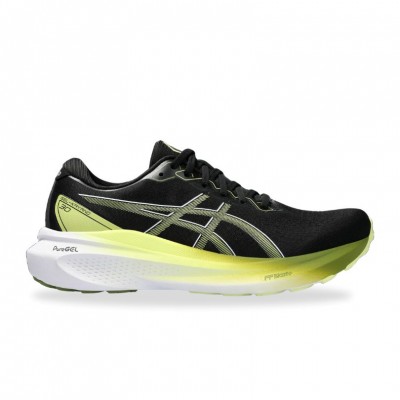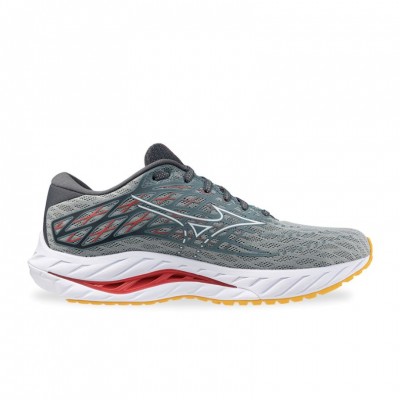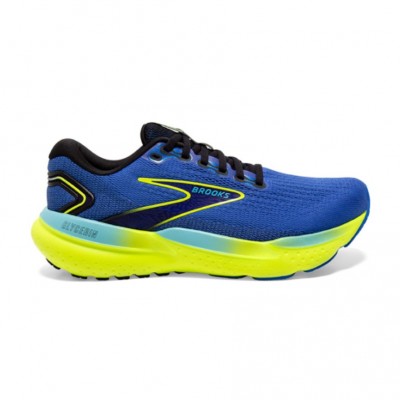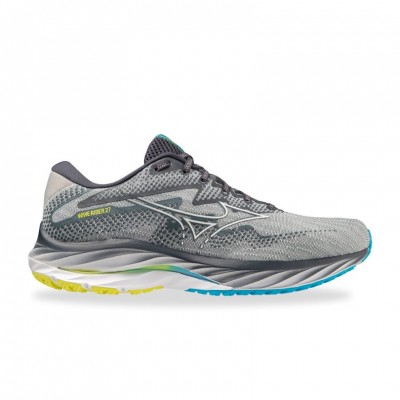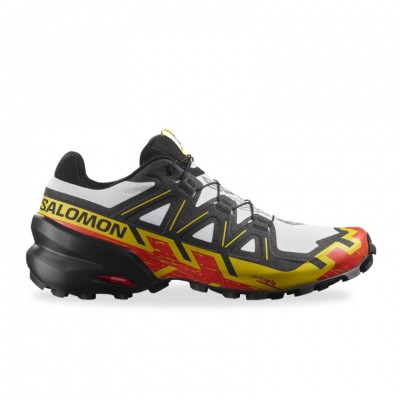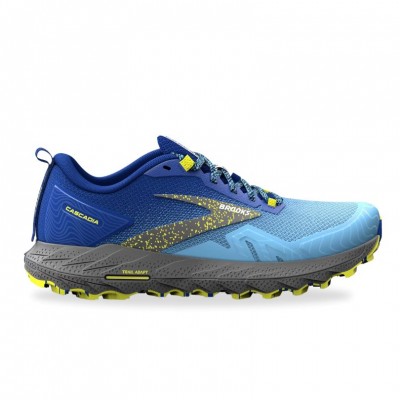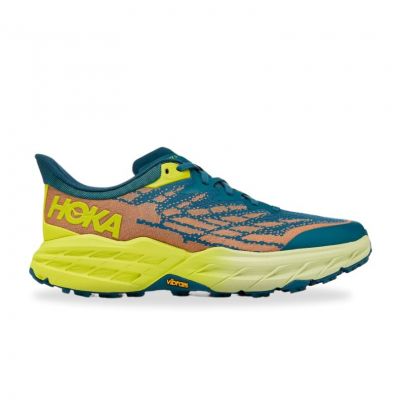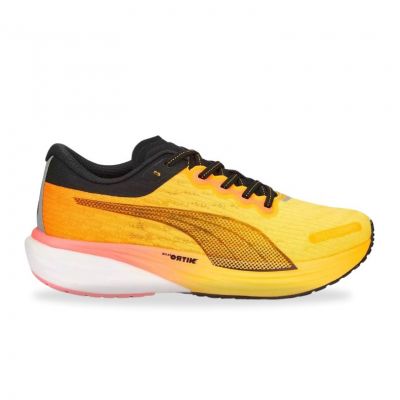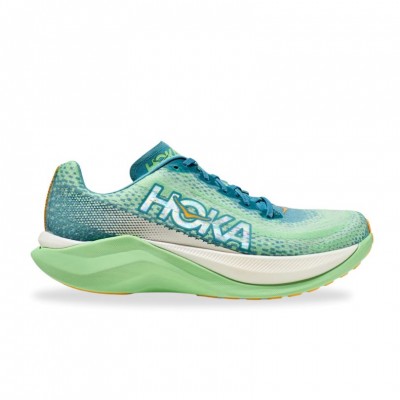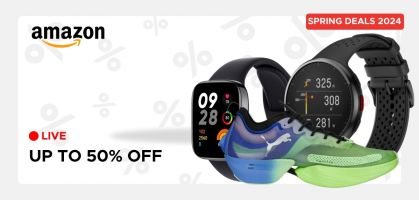There is almost one type of running shoe for every type of runner. This is very good news because it allows us to have a shoe model that will adapt to the way we run, the distance we run, our weight or our goals. But the tricky part is to find the ideal model among an increasingly wide range of brands and products. At RUNNEA we have tools to help you select the right shoe for your tastes, but even so it is often difficult to find the ideal model based on the particular needs of each individual. In this article we want to help you understand the criteria that will allow you to identify whether a running shoe is right for your needs. And then you will only have to compare and find the best price, and for that, at RUNNEA we are the best at finding bargains. Here we go.
Not sure which shoe to choose?
In a few simple steps we help you to choose the ideal running shoe for you.
GO TO THE RECOMMENDER1. Beginner runners
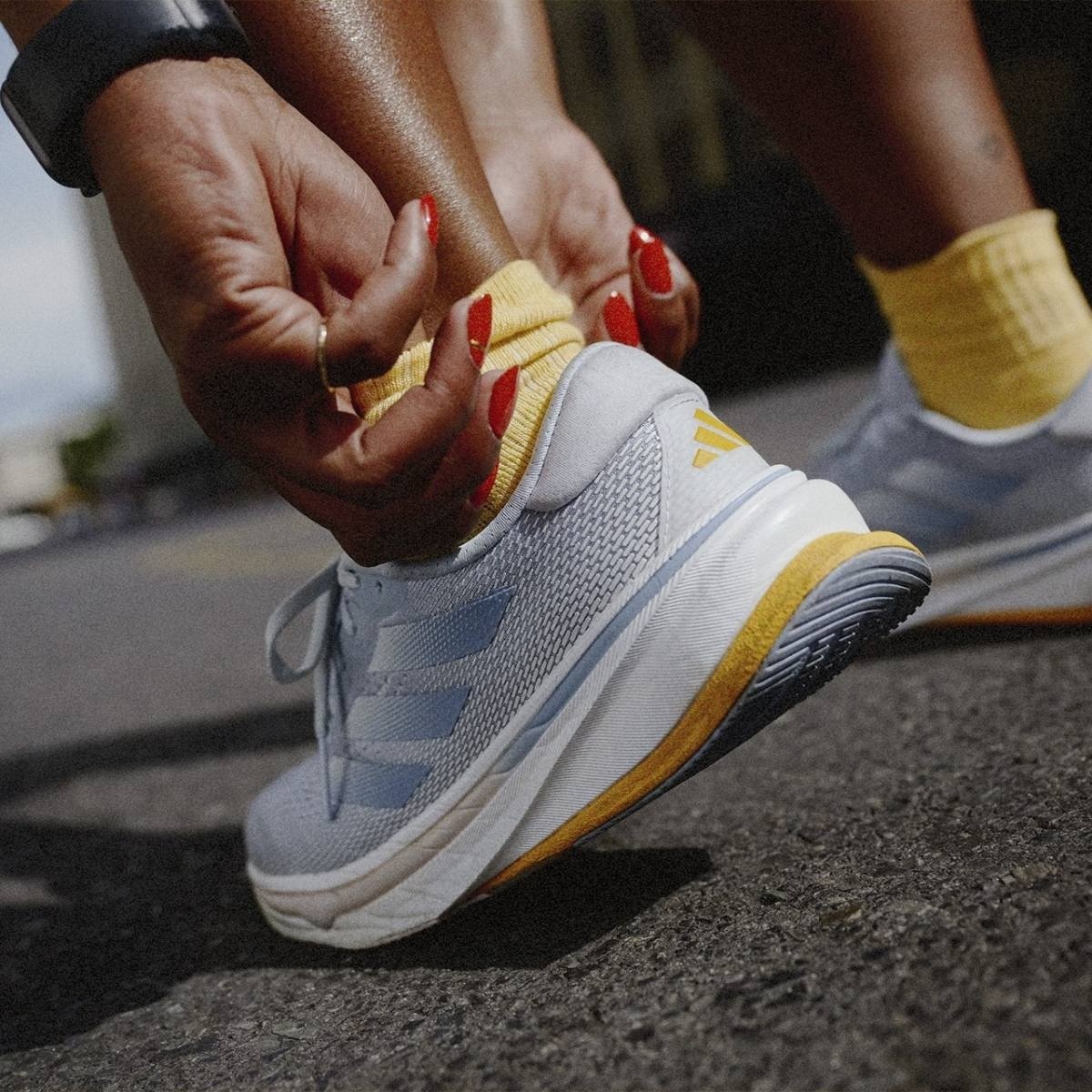
This type of runner does not usually have a good running technique, which is completely normal. Therefore, their main need is for a running shoe that offers a high level of cushioning, support and comfort to protect joints and muscles from repetitive impact. In addition, a high drop helps facilitate a smooth transition into the step.
- Preference for comfort: Comfort is key, as an unpleasant experience can discourage a novice runner from continuing training.
- Need for protection and support: Since your body is still adapting to the new exercise, it is important to have a shoe that offers sufficient support and cushioning to minimize the risk of injury.
shoe recommendations for beginner runners
High cushioning: To compensate for lack of refined technique and to protect joints and muscles from repetitive impacts. Shoes with good cushioning provide a softer and more comfortable experience.
High drop: A higher heel-to-toe drop (height difference between heel and toe) makes it easier to land on the heel, which is very common among new runners. This helps a smoother transition during the stride cycle.
Stability: The objective is to offer security and extra protection during running, which is closely linked to not having an efficient technique.
Flexibility and lightness: While stability is important, shoes should also offer some flexibility and be light enough so as not to hinder the natural movement of the foot.
Comfortable fit: A good fit is essential. The shoe should be roomy enough to allow for natural expansion of the foot during running, but not so large as to cause slippage or chafing.
Examples of shoes for beginners
2. Road runners who run to get in shape or clear their heads
Asphalt runners who run primarily to get fit or clear their heads are generally looking for comfort, durability and adequate protection to tackle hard and often urban surfaces.
- Comfort over moderate distances: They often run moderate distances on a regular basis, so comfort is a key factor. A shoe that offers a good fit and proper support is essential to avoid discomfort and injury.
- Durability: Since asphalt can wear out shoes quickly, it is important to choose shoes designed for durability and strength.
- Breathability: Especially in urban environments, where there can be more heat and less ventilation, the breathability of the shoe is important to keep feet cool and comfortable.
shoe recommendations for this type of runners
Adequate cushioning: Look for shoes with cushioning that can mitigate the constant impact of asphalt. Shoes with advanced cushioning technologies are ideal.
Support structure: A good support structure is important to maintain proper foot alignment and prevent injury.
Flexibility and lightness: Although support is needed, the shoe should not be too stiff. It should allow natural movement of the foot and be light enough not to be a burden.
Sole durability: A tough, high-quality sole is important to handle the wear and tear of asphalt.
Breathability: Materials that allow good air circulation to keep feet dry and cool.
Examples of suitable shoes
3. Long distance runners on asphalt
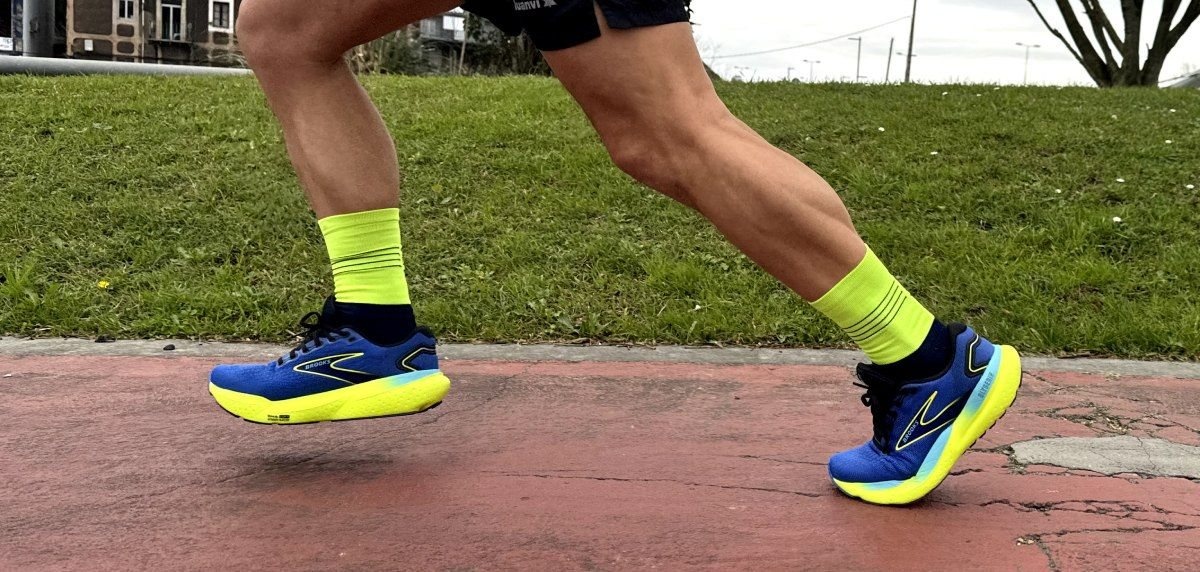
This type of runner needs shoes that can handle long miles without compromising comfort and efficiency. They are looking for a combination of cushioning, some support, durability and a design that minimizes foot fatigue.
shoe recommendations for long-distance runners
- Strength and durability: shoes should be able to withstand long distances while maintaining their structure and functionality over many miles.
- Cushioning: Cushioning that can protect the runner's joints and muscles from repetitive impacts over long hours is essential. This cushioning must be effective without being excessively bulky or heavy.
- Comfort and fit: A good fit is crucial to avoid problems such as blisters, chafing or uncomfortable pressure points, especially during long runs.
- Breathability: Since feet can swell and heat up during long runs, the breathability of the shoe is important to maintain comfort.
- Support and stability: shoes should offer adequate support to prevent foot and ankle fatigue, especially in the later stages of the run.
- Models with responsive cushioning: Shoes that combine good cushioning with responsiveness and running efficiency are ideal.
- Lightest possible weight: shoes should be sturdy enough to withstand wear and tear, but light enough not to add unnecessary fatigue.
- Adaptability to various terrains: For runners participating in events that include a mix of asphalt and trails, shoes should be versatile in terms of traction and stability.
Examples of suitable shoes
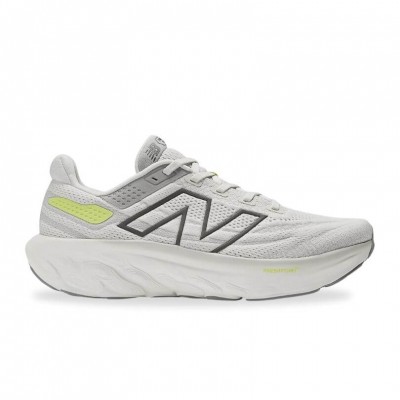
New Balance Fresh FoamX 1080 v13
New Balance Fresh FoamX 1080 v13
4. Lightweight and fast runners
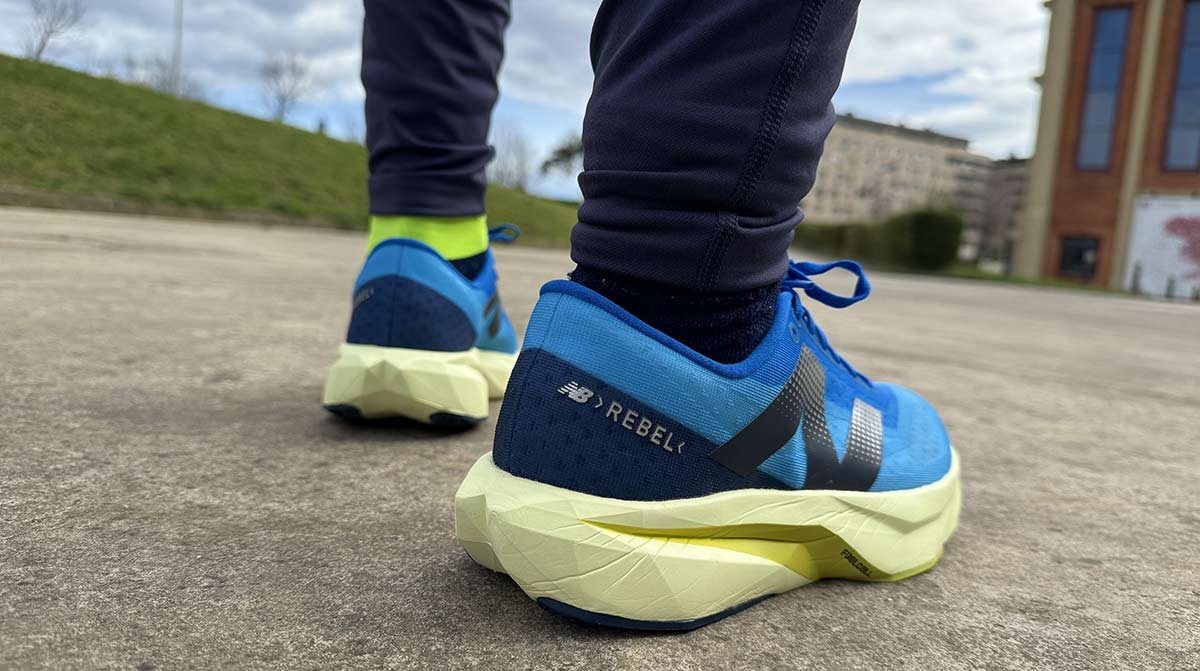
Focused on improving times and increasing speed, they are looking for lightweight but responsive running shoes. A low drop is preferable to promote a fast and efficient stride. They can also opt for a shoe with a carbon plate. We are talking about training shoes, not racing shoes.
Recommendations of Shoes for lightweight runners
- Strength and durability: shoes must be able to withstand long distances, maintaining their structure and functionality over many kilometers.
- Effective cushioning: Cushioning that can protect the runner's joints and muscles from repetitive impacts over long hours is essential. This cushioning must be effective without being excessively bulky or heavy.
- Comfort and fit: A good fit is crucial to avoid problems such as blisters, chafing or uncomfortable pressure points, especially during long runs.
- Breathability: Since feet can swell and heat up during long runs, the breathability of the shoe is important to maintain comfort.
- Support and stability: shoes should offer adequate support to prevent foot and ankle fatigue, especially in the later stages of the run.
- Models with responsive cushioning: Shoes that combine good cushioning with responsiveness and running efficiency are ideal.
- Lightest possible weight: shoes should be sturdy enough to withstand wear and tear, but light enough not to add unnecessary fatigue.
- Adaptability to various terrains: For runners participating in events that include a mix of asphalt and trails, shoes should be versatile in terms of traction and stability.
Examples of suitable shoes
5. Heavy or overweight runners
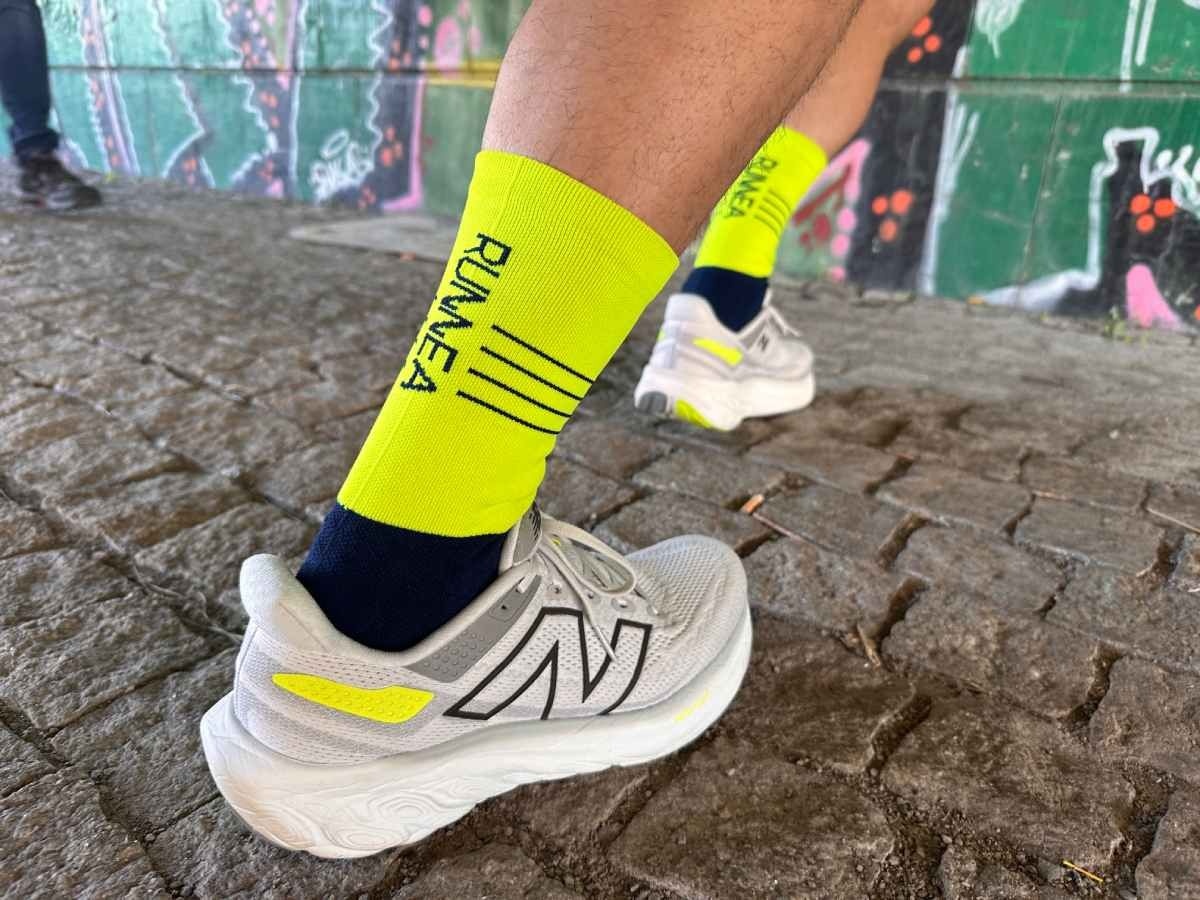
Overweight or heavy runners above 90 kilograms need running shoes with robust cushioning to handle the additional impact and reinforced support for stability and proper alignment.
Overweight runner characteristics and needs
- Higher impact with every step: Higher body weight results in greater impact with every step. This implies a need for superior cushioning to absorb these impacts and protect the joints.
- Need for additional support: Robust support, especially in the plantar arch and heel area, is essential to maintain proper foot alignment and avoid stress on the ankles, knees and hips.
- Durability: Shoes must be able to withstand additional wear and tear without losing their shape and functionality.
- Comfort and proper fit: Comfort is essential, especially to avoid problems such as blisters or pressure points. A good fit ensures that the shoe is neither too tight nor too loose.
Examples of shoes for overweight runners

New Balance Fresh FoamX 1080 v13
New Balance Fresh FoamX 1080 v13
6. Pronator runners
They need shoes with midfoot support and pronation control to maintain proper alignment and prevent injury.
Characteristics and needs of the runner with pronator footprint
- Increased impact with each step: Increased body weight results in greater impact with each step. This implies a need for superior cushioning to absorb these impacts and protect the joints.
- Need for additional support: Robust support, especially in the plantar arch and heel area, is essential to maintain proper foot alignment and avoid stress on the ankles, knees and hips.
- Durability: shoes must be able to withstand additional wear and tear without losing their shape and functionality.
- Comfort and proper fit: Comfort is essential, especially to avoid problems such as blisters or pressure points. A good fit ensures that the shoe is neither too tight nor too loose.
Examples of suitable shoes to avoid over-pronation
7. Supinator runner
Challenges and Needs: Require a shoe with good cushioning and flexibility to compensate for the lack of natural shock absorption. Example of a Suitable Shoe: the Nike Air Zoom Vomero offers soft cushioning and good support, ideal for supinators.
Characteristics and needs of the runner with a supinator footprint
- Supination or outward stride: This type of stride can lead to uneven shoe wear and increased risk of injury due to a reduced natural ability to absorb impact.
- Need for cushioning and flexibility: Supinators benefit from shoes that offer additional cushioning and increased flexibility to compensate for the lack of natural shock absorption.
- Neutral support: Unlike pronators, supinators do not need as much motion control or additional arch support, but rather a shoe that offers neutral support.
- Durability in specific areas: Wear tends to occur on the outside edge of the shoe, so additional durability in this area can be beneficial.
shoe recommendations for this type of runner.
8. Trail runners
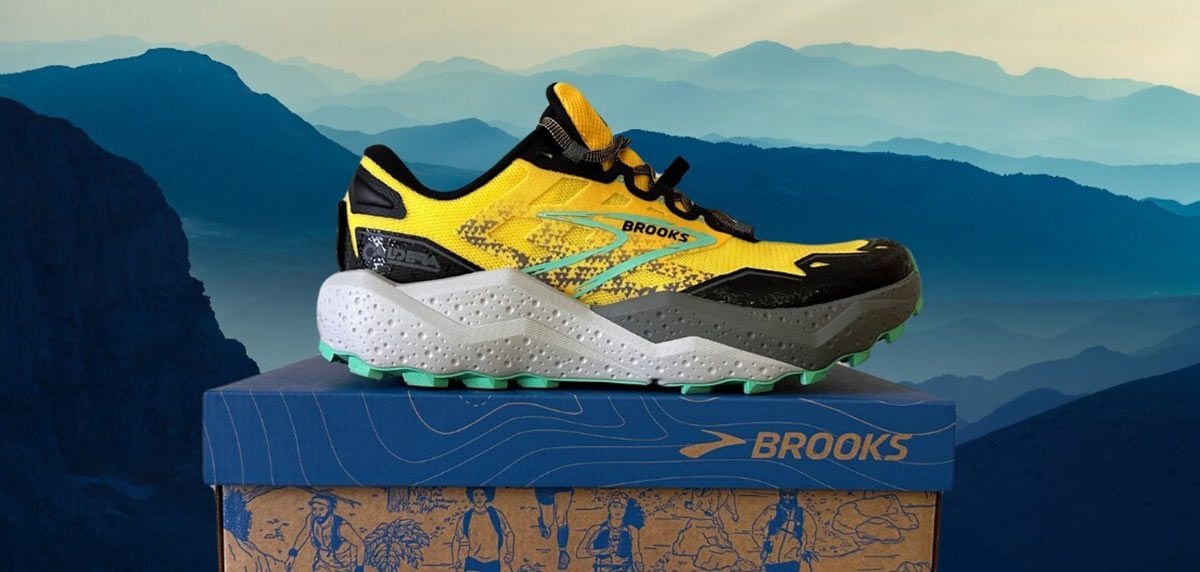
Trail runners face varied terrain, including rocks, gravel tracks or tree roots, which requires trail shoes with excellent traction and durability. They also need protection against impact and external elements, as well as good stability to prevent sprains and injuries. Example of a Suitable Shoe: the Salomon Speedcross stands out for its grip on difficult terrain, durability and protection, making it a leading choice for trail running.
- Need for stability: Due to the unpredictable nature of the terrain, these shoes must offer excellent stability to minimize the risk of twisting or falling.
- Protection against external elements: Trail running shoes must provide good protection against natural elements, such as sharp rocks or branches, and often have reinforcements in key areas such as the toe and sides.
- Cushioning with some firmness: While some cushioning is needed, trail runners often prefer a more "natural" terrain feel, which can mean less cushioning than asphalt shoes.
Trail runner characteristics and needs
Outsole with good grip: Look for shoes with outsoles designed to provide traction on a variety of surfaces, including mud, rock and dry terrain.
Reinforcements and protections: Choose shoes that offer additional protections, such as reinforced toe caps and abrasion-resistant materials.
Stability and support: shoes with good ankle support and stable construction are crucial for safe trail running.
Adaptive cushioning: Adequate cushioning to absorb shock, but without sacrificing responsiveness and ground feel.
Durability: Materials and construction that can withstand the toughest trail conditions.
shoe recommendations for this type of runner
9. Police or firefighter competitors
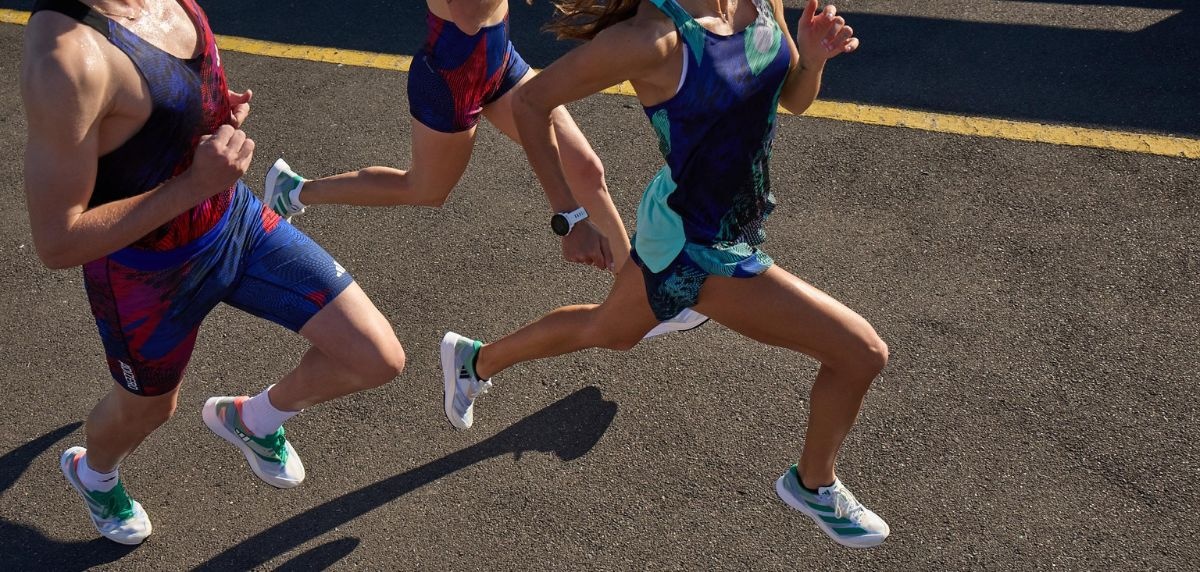
People who are preparing for police or firefighter competitions need a very specific type of footwear. They must be shoes that allow them to be fast and agile, but at the same time stable for the agility tests.
Shoes Recommendations
- Responsive Shoes: Models that are responsive and lightweight, providing the necessary speed and agility.
- Shoes with stable support: Choose shoes that provide stable support for lateral movements and quick changes of direction.
- Moderate Drop: Shoes with a drop of around 4-8 mm may be ideal, as they offer a balance between comfort and a natural stride.
Examples of suitable shoes
Each runner profile has specific requirements, and the choice of shoes should reflect these needs to optimize performance and the running experience. In addition, factors such as training frequency, terrain conditions, and personal goals should also be considered to make the best possible choice.
Read more news about: Running News
